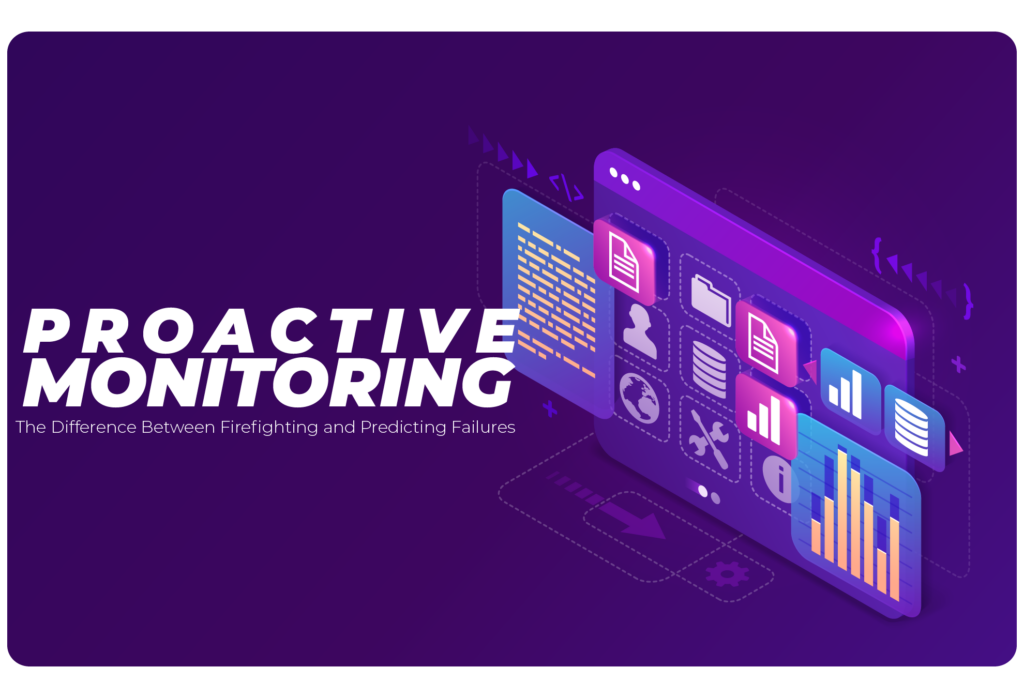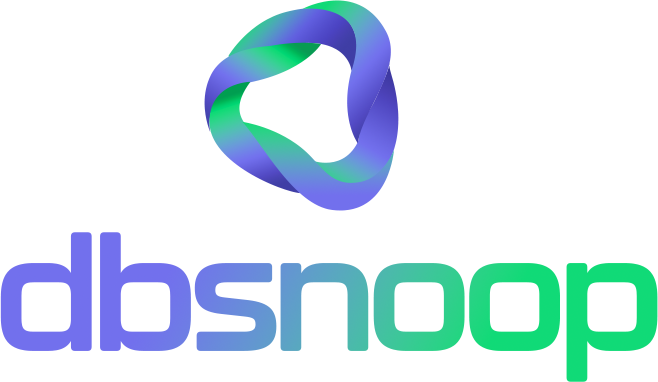

Proactive Monitoring: The Difference Between Firefighting and Predicting Failures
In the vocabulary of technology, few metaphors are as ubiquitous and revealing as “firefighting.” It perfectly describes the default state of many IT and SRE teams: a frantic, adrenaline-fueled race to contain a disaster that is already underway, causing damage to revenue and reputation. The problem is that, for many companies, this reactive culture is not seen as a strategic failure, but as the inevitable nature of operations work. It is believed that the role of IT is to be the best possible fire department.
This is a fundamentally flawed and financially dangerous premise. Being the best at putting out fires means you have accepted living in a building that is constantly on fire. The true evolution in systems management is not about how quickly you respond to an alarm; it’s about building a surveillance architecture so intelligent that it can identify the faulty wiring, the gas leak, and the short circuit long before the first spark appears. It is the monumental difference between managing incidents and preventing failures.
The Anatomy of “Firefighter Mode”: Living in the Reactive Cycle
Reactive monitoring, even when labeled as “24/7,” is a disaster management philosophy. It is built on pillars that, by their very nature, ensure that the team will always be one step behind the problem.
The Tyranny of Static Thresholds
The pillar of reactive monitoring is the threshold-based alert. “Alert when CPU > 90%,” “Alert when disk space < 10%.” These rules are fundamentally flawed for three reasons:
- They are Lagging Indicators: A high CPU alert informs you that the system is already under severe stress. It’s the equivalent of a fever sensor that only goes off when the patient reaches 40 degrees Celsius. The damage is already occurring.
- Lack of Context: The alert doesn’t differentiate between a legitimate CPU spike (a user running a heavy report at an allowed time) and an illegitimate one (a process in a loop consuming all resources). It treats both scenarios the same, generating noise.
- Inadequacy for Dynamic Environments: In a modern cloud architecture with auto-scaling, a CPU alert may never trigger. The system simply adds more resources (and more cost) to mask the symptom, while the root cause—an inefficient query—continues to worsen silently.
The Illusion of Green Dashboards
Dashboards are the map of what has already happened. They are excellent for post-mortem analysis but terrible for prediction. A screen full of green charts creates a dangerous sense of security, ignoring the subtle degradation trends that accumulate beneath the surface. A query that adds 2ms of latency each week doesn’t change a chart’s color from green to yellow, but over six months, it becomes the catalyst for the next major performance incident.
The Organizational Cost of “Firefighting”
Living in reactive mode has a devastating human and organizational cost:
- “War Room” Culture: Every incident becomes an emergency meeting, taking dozens of productive hours from senior engineers who should be focused on innovation.
- Burnout and Turnover: No one likes to be a perpetual firefighter. The constant stress and lack of proactive, creative work lead to burnout and the loss of key talent.
- Frozen Innovation: Resources are allocated to keeping the system running, not to evolving it. Technical debt increases, the architecture ages, and the company loses its competitive edge.
The Science of Prevention: The Predictive Observability Model
Proactive monitoring, or more accurately, predictive observability, is a different philosophy. Its goal is not to detect failures, but to detect the conditions that lead to failures. It operates based on intelligence, context, and trend analysis. This is where the Autonomous DBA approach from dbsnOOp redefines what it means to watch over a system.

The Foundation: Understanding “Normal” with AI-Powered Baselines
Prevention is impossible without a deep understanding of what is healthy and normal behavior. Trying to define “normal” with static rules is futile. dbsnOOOp uses machine learning to build a dynamic, high-fidelity baseline that serves as your system’s “fingerprint.”
- Contextual and Seasonal: The AI learns that the workload of a month-end closing is different from that of a normal day. It understands the peak access times of your e-commerce at 8 p.m. and the low-activity windows in the early morning. “Normal” is not a number; it is a complex, time-dependent pattern.
- Multidimensional: The baseline doesn’t just consider CPU. It correlates hundreds of metrics—I/O latency, lock waits, buffer cache usage, logical read/write rates—to create a holistic model of the system’s health.
The Prediction Mechanism: Detection of Silent Degradation
With this baseline established, dbsnOOp can identify the subtle deviations that are the true precursors to failures. This is the core of prediction.
- Trend Analysis: The platform doesn’t care about a momentary spike. It cares about the query that, over the last three weeks, has seen its I/O cost increase by 15%. It detects the silent degradation and flags it as a future risk. The system projects: “At this growth rate, this query will saturate disk resources in 45 days.”
- Behavioral Anomaly Detection: The AI can identify behaviors that do not violate any threshold but are anomalous. For example, an application that normally performs 90% reads and 10% writes suddenly reverses this ratio. This could indicate a bug in the new version or malicious activity, and it is detected instantly.
dbsnOOp in Action: From Prediction to Active Prevention
Identifying a future risk is only half the equation. True prevention comes from the ability to diagnose the root cause and provide a clear action plan before the risk materializes into an incident.
Top-Down Diagnosis: The Science of Root Cause
When dbsnOOp detects a predictive anomaly, it doesn’t send a cryptic alert. It performs its Top-Down Diagnosis functionality, which automates the investigation that a senior DBA would take hours to do.
- Observes the Symptom: Identifies the metric that is deviating from the baseline (e.g., increased COMMIT latency).
- Correlates with the Database: Maps the symptom to the database sessions that are suffering or causing the problem.
- Isolates the Cause: Pinpoints the exact SQL query, application, and user responsible for the anomaly.
- Analyzes the Fundamental Cause: Dives into the query’s execution plan to find the fundamental inefficiency: the missing index, the stale statistics, the inefficient JOIN.
AI-Powered Tuning: The Action Plan for Prevention
The result of this diagnosis is not a problem; it’s a solution. The AI-Powered Tuning functionality of dbsnOOp analyzes the root cause and generates concrete, actionable optimization recommendations.
- Precise Recommendations: “The product search query is degrading due to table growth. Creating this composite index on the (category_id, price) column will reduce logical reads by 95% and prevent future performance degradation.”
- The End of “Firefighting”: The IT team doesn’t receive an emergency call. It receives a proactive improvement ticket in its backlog. They can plan the implementation of the optimization during a maintenance window, calmly and in a controlled manner.
The Business Impact: From Cost Center to Value Enabler
The transition from a reactive to a predictive model has a profound and measurable impact on the business.
- Revenue Protection: By preventing downtime, you directly protect revenue. By optimizing performance, you improve the customer experience and increase conversion rates.
- Cost Optimization (OpEx): Inefficient queries are expensive, especially in the cloud. By proactively optimizing them, you reduce CPU, I/O, and memory consumption, resulting in lower cloud bills.
- Unlocking Innovation: This is the most strategic benefit. By eliminating the “firefighting tax,” you free your most talented engineers to do what they do best: build, innovate, and create a competitive advantage. The IT team is no longer seen as a reactive cost center but becomes a true partner in enabling business growth.
The choice between proactive and reactive monitoring is ultimately a decision about the type of company you want to be. One that is perpetually stuck in the past, fixing what broke, or one that is actively building a more resilient, performant, and innovative future.
Want to solve this challenge intelligently? Schedule a meeting with our specialist or watch a live demo!
Schedule a demo here.
Learn more about dbsnOOp!
Learn about database monitoring with advanced tools here.
Visit our YouTube channel to learn about the platform and watch tutorials.

Recommended Reading
- Banks and Fintechs: How AI Detects Fraud Before It Happens: The main article talks about the shift from a reactive to a predictive mindset. Fraud detection is the perfect example of proactivity in action. This post shows how the same philosophy of using AI to anticipate unwanted events (fraud) is applied by dbsnOOp to anticipate performance failures.
- AI in Retail: How to Forecast Demand and Reduce Dead Stock: Predicting a system failure is conceptually similar to forecasting product demand. Both require the analysis of historical data to take proactive actions that avoid a future loss—whether it’s downtime or dead stock. This article illustrates the power of prediction in business, reinforcing the value of dbsnOOp’s predictive approach for IT.
- What does your company lose every day by not using AI?: Living in “firefighting” mode has a massive opportunity cost. This post complements the theme by quantifying the daily losses that companies face by not adopting a proactive and intelligent (AI-based) approach, whether in performance, security, or innovation. It reinforces the argument that proactivity is not a luxury, but a competitive necessity.
Use Arrow Up and Arrow Down to select a turn, Enter to jump to it, and Escape to return to the chat.

